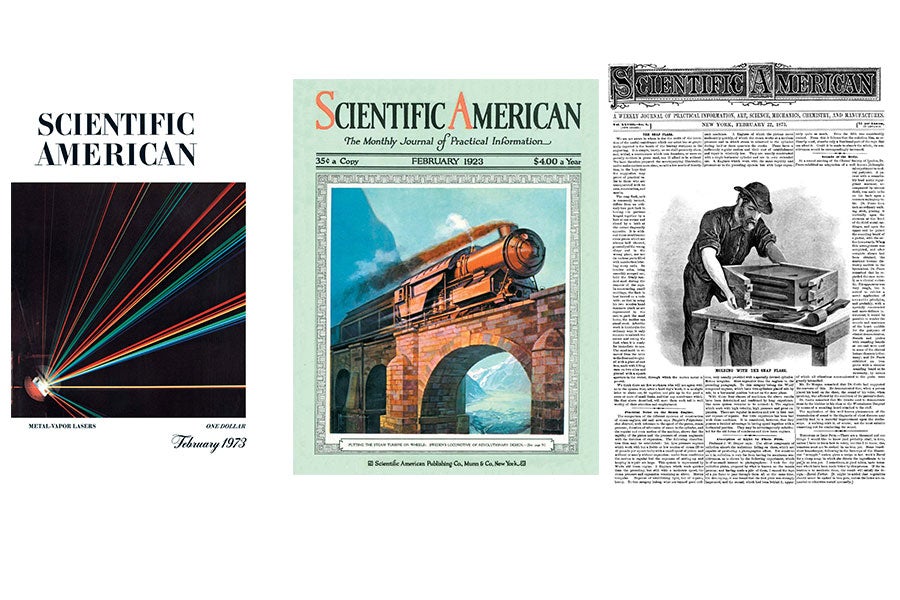1973
Mount Everest Not the Highest
“According to Robert L. Birch, the highest mountain is probably Chimborazo in the Ecuadorian Andes. It all depends on what is meant by ‘high.’ Mount Everest rises 29,028 feet above sea level, Chimborazo 20,561 feet. But because the earth is an oblate spheroid, the sea level at the Equator is some 14 miles farther from the center of the earth than the sea level at the North Pole. Indeed, distance from the center of the earth would seem to be a more reasonable standard for the height of a mountain, since it is a measure of how far the mountain sticks out into space. On this basis Chimborazo, which stands within two degrees of the Equator, is some two miles higher than Everest, which is nearly 28 degrees from the Equator.”
The Paranoid Computer
“‘Doctor: Are you depressed? Patient: No. Doctor: Were you taking drugs? Patient: No. Doctor: What is your problem? Patient: People make me nervous. Doctor: How do they do that? Patient: They stare at me. Doctor: Why? Patient: Maybe they don’t like the way I look or something. Doctor: Do you look unusual in some way? Patient: Why are you interested in my looks?’ This dialogue is the first part of a diagnostic interview between a psychiatrist and a patient who has systematized delusions of persecution. Unknown to the psychiatrist, however, the patient is a computer programmed to simulate paranoid processes in human beings. Out of 25 psychiatrists who interviewed the computer model, 23 judged the patient to be paranoid.”
Creationism in Science Class
“Divine creation will apparently not be taught in California as an alternative to evolution, at least not in natural-science classes. After some years of controversy the State Board of Education has decided that creationism need not be given equal treatment with biological evolution in elementary school textbooks. Instead, social science textbooks will have to include discussions ‘concerning the representative philosophies of the origin of man.’”
1923
Electric Car Has Advantages
“Recently a manufacturer in Wurttemberg, Germany, introduced a new electrically driven small automobile. It is claimed to possess certain advantages. It can be operated more cheaply with electrical power than [cars] with liquid fuels. The driving mechanism, connecting the motor with the wheels, is much more simply constructed. The upkeep is less costly, likewise, and the care that has to be given is by no means as great. The car is started by simply pulling a lever alongside the driver’s seat. The car travels at a maximum speed of 20 to 30 kilometers per hour and can travel 80 to 100 kilometers and return on a smooth, level road. During the night it may be connected with any source of direct current to be recharged. Alternating current can be used as well, when a suitable device is interposed between the battery and the source of current.”
1873
Hudson Ice Cakes for New York City
“In New York the harvesting of ice is at its height on the Hudson River, along whose banks many very large and costly ice houses are found. Thirty thousand tuns are commonly stored in a building. Ice is first scraped and planed across three or four acres near the house, then [sawed] into blocks or cakes 22 by 32 inches, and in some places 44 inches square. Then a canal is cut from the sawn acres to the mouth of the elevators at the house. Polemen shove the ice along till it reaches the elevators, which are worked by steam and convey it to open slideways on each floor of the building, where stowers stand ready with hooks to pack it away. Each house manages to stow away thirty cakes of ice per minute, each cake weighing about 250 pounds. This is 18,000 cakes per day, and there are forty-two ice houses on the river. The total stored for our city market is one million five hundred thousand tuns, being almost one tun of the crystals for every inhabitant of New York and Brooklyn.”














